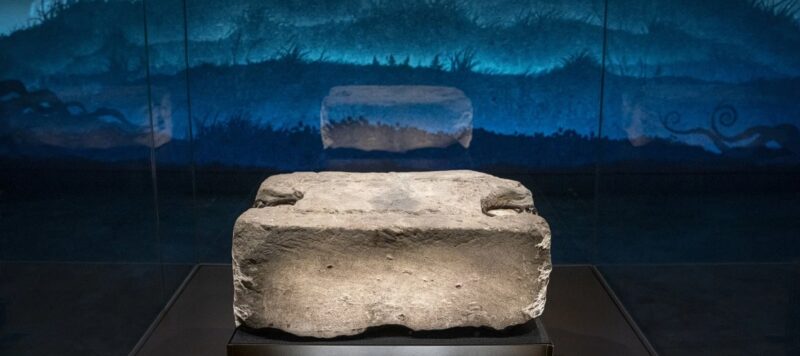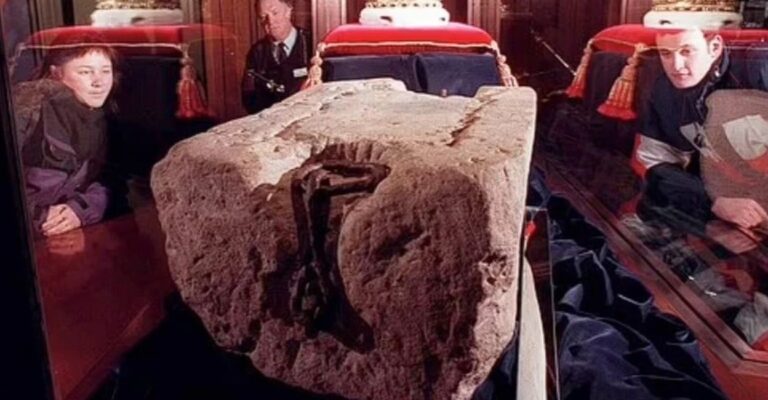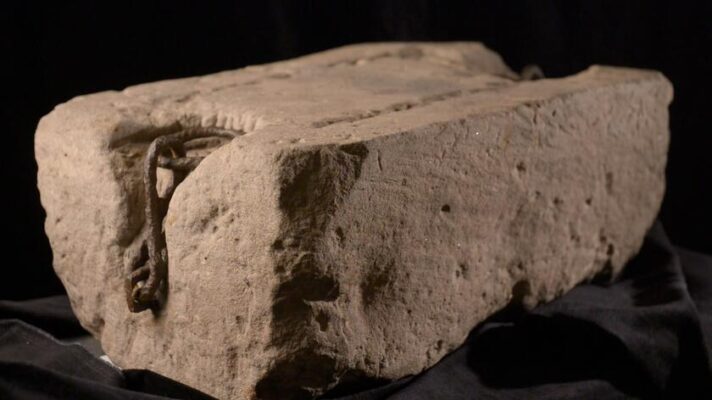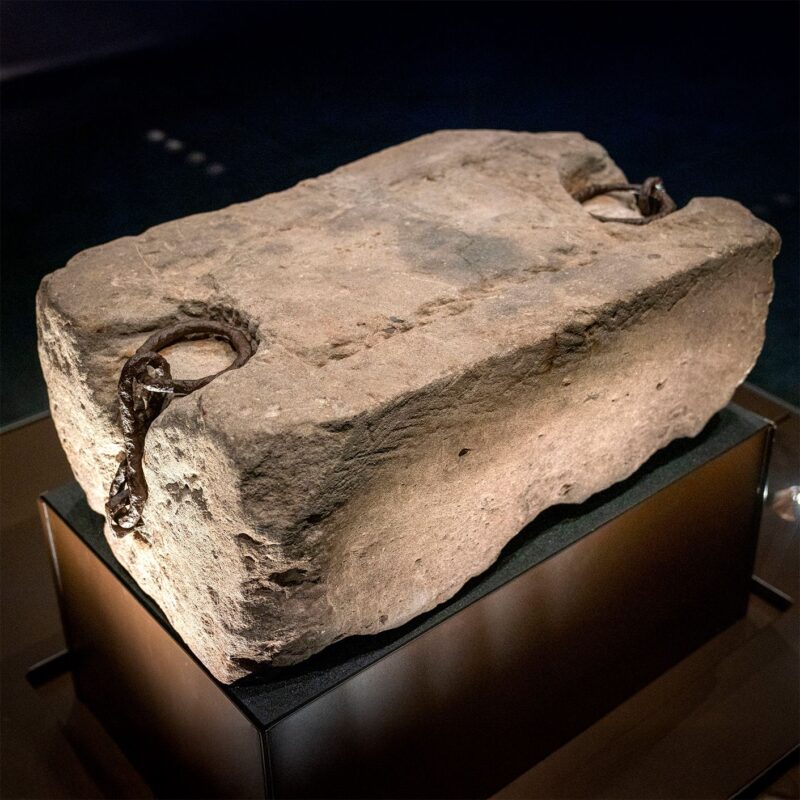On this day in 1996, the Stone of Destiny, also known as the Stone of Scone, was officially returned to Scotland after being held in England for nearly 700 years. This remarkable event marked a significant chapter in Scottish history and was the culmination of a long-standing battle to reclaim a symbol of Scottish heritage and sovereignty.
The Stone of Destiny has been a crucial part of Scotland’s royal history, with kings traditionally crowned at Scone Abbey, near Perth, while sitting upon this ancient stone. In 1296, however, Edward I of England seized the stone and moved it to Westminster Abbey in London. After centuries of being held in England, the stone’s return to Scotland in 1996 was celebrated as a moment of cultural and historical triumph.

The Significance of the Stone of Destiny in Scottish History
The Stone of Destiny holds immense cultural and historical significance for Scotland, being closely tied to the coronation of Scottish kings for centuries.
The Stone’s Role in Royal Coronations
For hundreds of years, Scottish monarchs were crowned at Scone Abbey, sitting upon the Stone of Destiny, which was placed in a special royal chair. The stone became a symbol of the Scottish monarchy and a central element of the coronation rituals. It was believed that the stone had divine powers and that it was an essential part of the coronation process, confirming the legitimacy of the new king or queen.
Edward I’s Seizure of the Stone
In 1296, King Edward I of England captured the Stone of Destiny as part of his broader campaign to assert English control over Scotland. Edward moved the stone to Westminster Abbey in London, where it was installed in a specially built throne known as the Coronation Chair. The English monarchy continued to use the stone in coronation ceremonies for centuries, despite its strong association with Scottish kingship. This act of taking the stone was seen as an affront to Scottish independence and a reminder of English dominance.
A Symbol of Scottish Identity
Over the centuries, the Stone of Destiny became an enduring symbol of Scottish identity and resistance. Its theft by Edward I only heightened its significance to Scots, and many believed that Scotland could not truly be free until the stone was returned. The stone’s return was not only a victory for Scottish heritage but also an affirmation of Scotland’s sovereignty and historical pride.

The 1950 Raid: A Bold Attempt to Reclaim the Stone
The Stone of Destiny’s journey back to Scotland took a dramatic turn in 1950, when a group of Scottish students embarked on a daring raid to reclaim it.
The Scottish Students’ Raid
In December 1950, a group of four Scottish students, led by Ian Hamilton, traveled to Westminster Abbey and managed to steal the Stone of Destiny. They broke into the abbey, removed the stone, and smuggled it back to Scotland, hiding it for several months. Their act of defiance was fueled by a desire to return the stone to its rightful place in Scotland and to make a statement about Scottish nationalism and pride.
Hiding the Stone in Scotland
After the stone was stolen, the students kept it hidden in various locations in Scotland, including the home of one of the students. For four months, the stone was kept out of sight, and it became a symbol of resistance against English rule. The students hoped their actions would spark a broader movement to reclaim Scotland’s heritage.
The Stone’s Return to Westminster
However, despite the students’ best efforts, the Stone of Destiny was eventually discovered, and in April 1951, it was returned to Westminster Abbey. The students were arrested, and the stone was placed back in its position within the Coronation Chair. While their raid failed to keep the stone in Scotland permanently, it brought international attention to the issue of the stone’s rightful ownership and fueled the desire for its return.

The Final Return: Edinburgh Castle and the Perth Museum
After decades of negotiation and debate, the Stone of Destiny was finally returned to Scotland in 1996, where it was placed in Edinburgh Castle before being moved to the new Perth Museum.
The 1996 Return to Scotland
In November 1996, the British government made the decision to officially return the Stone of Destiny to Scotland, albeit on the condition that it would remain a part of the coronation ceremony for the English monarchs as well. The stone was moved from Westminster Abbey to Edinburgh Castle, where it was placed on public display, allowing Scottish citizens and visitors from around the world to view this historic artifact.
The Stone’s Location in Edinburgh Castle
Edinburgh Castle became the temporary home of the Stone of Destiny following its return. It was displayed in the Crown Jewels exhibition, attracting many visitors who were eager to see the stone that had played such a significant role in both Scottish and English history. Its presence at the castle served as a symbol of the restored cultural pride of Scotland.
The Stone’s Current Home in Perth Museum
In recent years, the Stone of Destiny was relocated to the new Perth Museum, where it now sits on display for all to see. This marks the final chapter in the stone’s long and turbulent history, as it is once again in Scotland, where it rightfully belongs. The stone’s return to Scotland in 1996 and its eventual move to the Perth Museum ensures that this important symbol of Scottish history will continue to be preserved and appreciated by future generations.
See more: The Petrified Tree Stump: Incredible Discovery from 1918
Conclusion: A Symbol of Scottish Pride and History
The return of the Stone of Destiny to Scotland in 1996 marked the end of a long journey for this iconic symbol of Scottish heritage. From its removal by Edward I in 1296 to the bold raid by Scottish students in 1950, the stone has been a central figure in Scotland’s struggle for independence and pride. Today, it resides in the Perth Museum, where it continues to stand as a powerful reminder of Scotland’s rich history, resilience, and the importance of cultural identity.


CÁC TIN KHÁC
Mary Walton: The Forgotten Inventor Who Helped Clean Up America’s Cities
Tomb of Queen Nefertari in the Valley of the Queens, Egypt
Discover the Hypostyle Hall of the Temple of Hathor at Dendera
Venus de Losange: Unveiling the Mystery of a 20,000-Year-Old Paleolithic Icon